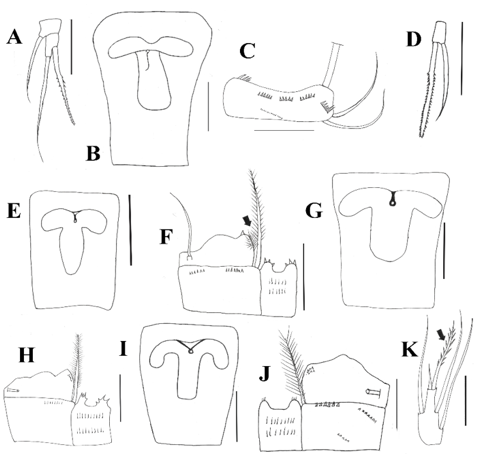VOLUME 11 NUMBER 1 (January to June 2018)

Philipp. Sci. Lett. 2018 11 (1) 003-009
available online: January 26, 2018
*Corresponding author
Email Address: rspapa@ust.edu.ph
Date Received: June 24, 2017
Date Revised: November 29, 2017
Date Accepted: January 18, 2018
ARTICLE
New locality records for Mesocyclops Sars, 1914 and Thermocyclops Kiefer, 1927 in Luzon and Mindanao Islands in the University of Santo Tomas – Zooplankton Reference Collection (UST-ZRC)
by Erica Silk P. Dela Paz1,2 and Rey Donne S. Papa1,2,3*
1The Graduate School, University of Santo Tomas, Manila 1015, Philippines
2Department of Biological Sciences, College of Science, University of Santo Tomas,
España, Manila 1015, Philippines
3Research Center for Natural and Applied Sciences, University of Santo Tomas, España,
Manila 1015, Philippines
2Department of Biological Sciences, College of Science, University of Santo Tomas,
España, Manila 1015, Philippines
3Research Center for Natural and Applied Sciences, University of Santo Tomas, España,
Manila 1015, Philippines
Copepods from the genera Mesocyclops and Thermocyclops have recently gained much attention due to recent studies, which revealed their wide geographical distribution in the country as well as the presence of several endemic species, which were not observed among other copepod groups (most notably Calanoids and Harpacticoids) in the Philippines. A study on the species composition and distribution of Mesocyclops and Thermocyclops in the two largest islands in the Philippines – Luzon and Mindanao was conducted to come up with a more comprehensive understanding of the distribution and occurrence of cyclopid copepods in the archipelago. Samples deposited in University of Santo Tomas – Zooplankton Reference Collection (UST-ZRC) (collected from 2006 to 2013) collected from 47 freshwater habitats in Luzon and Mindanao islands were examined and analyzed. New locality record of Mesocyclops thermocyclopoides, Thermocyclops crassus, T. decipiens, T. taihokuensis, Eucyclops sp. and cyclopoid copepodites were observed from 32 freshwater habitats. This brings the known locality records for cyclopid copepods from 99 (from all available published materials) to 131 localities throughout the Philippines.
© 2025 SciEnggJ
Philippine-American Academy of Science and Engineering